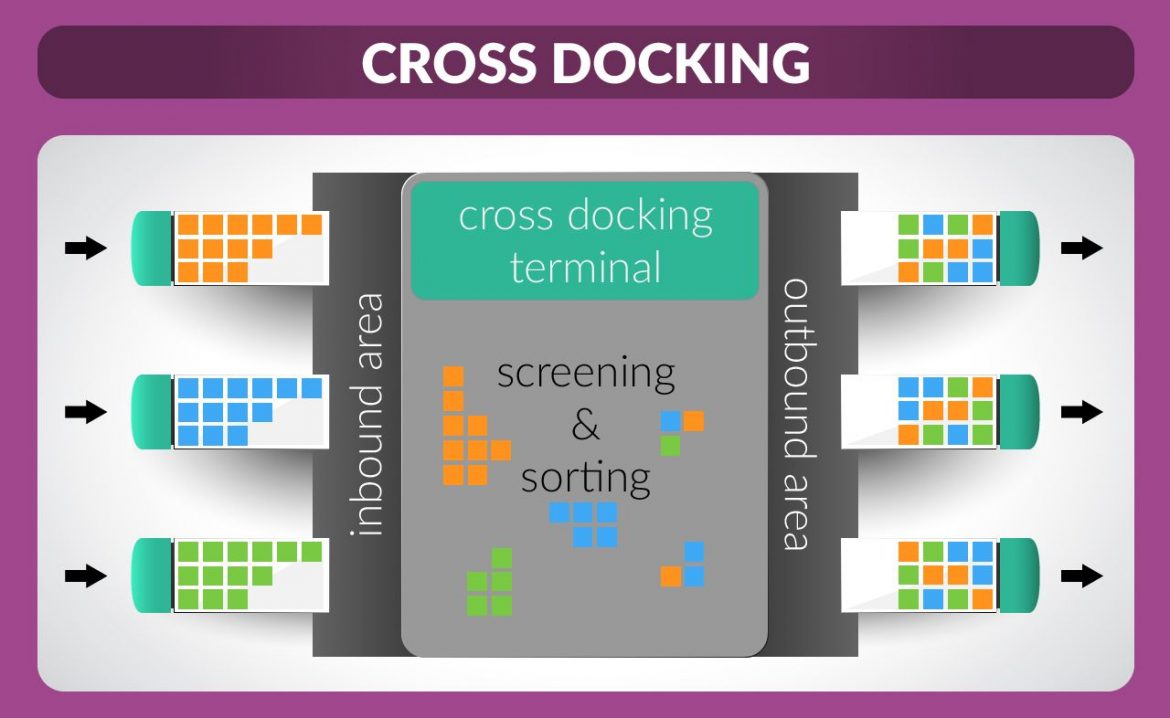In the supply chain model, goods from a manufacturer or producer are sent for storage from where the goods are delivered to resellers or the end-user. Cross-docking is a supply chain model where businesses remove the storage link. By removing this link, cross-docking allows for the manufacturers of goods to deliver products straight to the customer without having to go to a storage facility or warehouse first. This practice is beneficial cost and time-wise for both buyers and sellers.
What is Cross-Docking for Ecommerce?
Cross-docking allows e-commerce businesses to organize the goods and deliver them directly to their customer. This eliminates the need to go to a facility where they would need to store the products before shipping. This is good for e-commerce businesses as it allows them to keep their overheads low. In this process, e-commerce businesses do not incur storage facility costs. Instead, they can just contact the manufacturer to organize a delivery either by them or with a courier company. Then, both parties do not have to store the products anywhere.
When is Cross-Docking Used?
The best scenario for cross-docking is when demand can meet supply. When this occurs, there is no need for storage facilities. Instead, products the e-commerce business can ship products directly to the resellers or end-users. Cross-docking solutions eliminate the need for excess supply that will need to be held somewhere until it is able to be sold.
Another factor to consider for cross-docking is when there is time sensitivity, or when the products are perishable. Some products need to be provided to resellers and end-users as quickly as possible. This allows end-users to utilize the products within their given shelf life. Eliminating the storage of these products creates a longer sales window for the products to be sold and put to use before perishing. This will help avoid retailers and consumers sending back any perishable items to the manufacturer.
For e-commerce businesses, cross-docking is also useful when there are certain specials and promotions. Cross-docking helps businesses handle a higher volume of sales. Businesses are able to deliver products directly to where they need to go, without the need for additional storage. This is similar to the demand meeting the supply as mentioned earlier.
Advantages of Cross-Docking for Ecommerce
The logistics process runs a lot more efficiently with reduced handling of the materials from the manufacturer to the reseller or end-user. This increase in efficiency is a result of removing a piece of the supply chain.
Cross-docking eliminates the need for any type of storage facility that would add extra storage or shipping costs to the business. The elimination of storage fees and reduced handling costs allows e-commerce businesses to sell at competitive prices.
The most important factor for an e-commerce business is time. Cross-docking speeds up the process allowing the goods to reach the customer at a faster rate. Ecommerce is becoming popular for its speed and turn-around times. As a result, many eCommerce businesses use cross-docking to keep up with the expectations of their customers.
Additional Information: Ecommerce Logistics: How to Diversify and Future-Proof Your Supply Chain
Ship Fortress LLC | Best Reefer Truckload | 3PL Warehouse Facility & Logistics in Milwaukee
Ship Fortress in Milwaukee understands every business has its own specific requirements. We customize and create solutions to meet each business’s unique needs. We truly do provide our clients with
- cost-effective delivery services
- flexible
- high-quality logistics solutions & LTL services
As a seamless extension of our clients’ business, we have a passion for exceptional customer service. Our experience and expertise allow us to provide multiple layers of client support services to propel businesses forward. Contact us for a FREE Quote.





